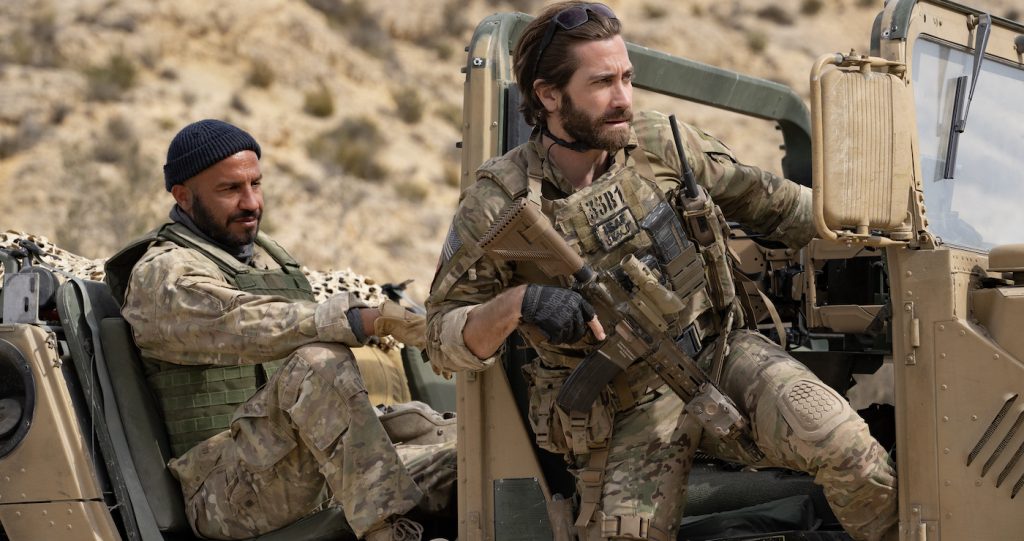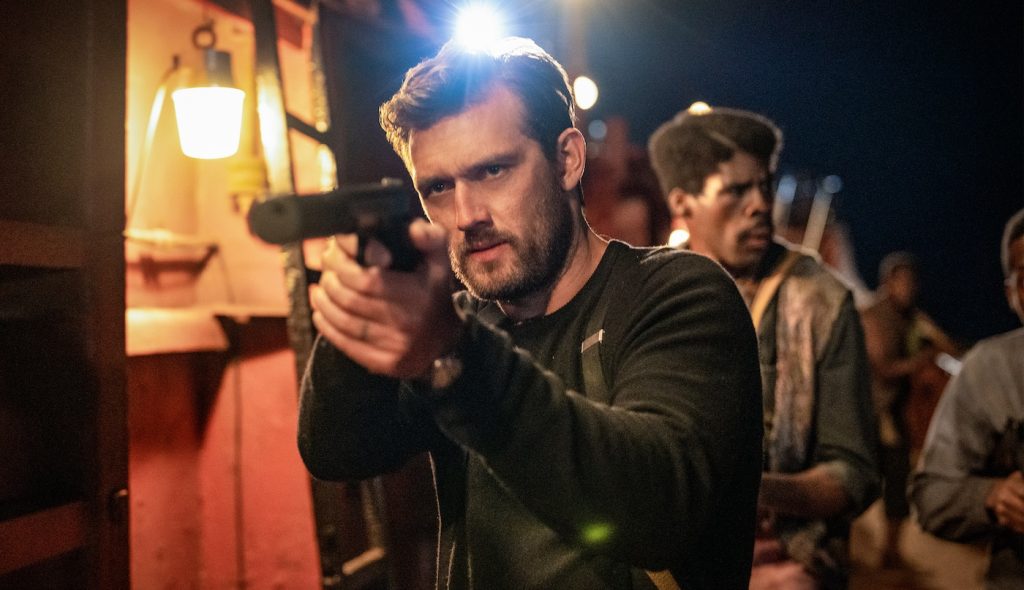Capturing Cavill & More With “The Ministry of Ungentlemanly Warfare” Cinematographer Ed Wild
In Part One of our conversation with cinematographer Ed Wild, we discussed how his documentary filmmaking background worked very well with director Guy Ritchie’s pragmatic and responsive approach. We continue the discussion with the throughline in Ritchie’s latest films, The Ministry of Ungentlemanly Warfare and The Covenant, both of which were lensed by Wild.
To create a lavish ballroom for the extravagant costume party in the third act, production designer Martyn John built a leveling deck in the hallway of a caravanserai, an inn in eastern countries where caravans rest at night. Knowing that Guy would want to be dynamic with the camera once Marjorie started singing, Wild worked closely with John to figure out the best way to light it. “We knew we’d see the ceiling. So, I put festoon lighting all around that gave us a glow on the walls and a base layer to start with. Then, Martyn put chandeliers in, and above those, I hung some 2kW lanterns,” he shares. Once González started singing, they could not pause to augment any lighting configurations. “So, you need to light the entire space and let her flow around and sort out what you can. I’m really happy with how Eiza looks in that scene – she really looks like a 1950s screen goddess in that cream dress.”
To deliver some of the kinetic action sequences on Ministry, Wild worked with the drone team at Skynamic. “We ended up with a lot of drone work. We used the Inspire 3 because of how versatile it is when transitioning from big wide shots to interiors, and it could do it all in one shot. The drones flew off the support boat, and we’d coordinate the wide shots to get as much coverage as possible. When you’re trying to do all that with boats bobbing up and down and bumping into each other, it’s pretty tricky.”
Skynamic’s drone team also made the sprawling aerial shots during intense gun battles in Afghanistan’s unforgiving terrain possible in The Covenant, Ritchie’s cinematic exploration of the aftermath of America’s 20-year war. In the film, U.S. Army Master Sergeant Kinley (Jake Gyllenhaal) is compelled to fulfill his nation’s promise to get his Afghan interpreter Ahmed (Dar Salim) to safety after the latter saved his life by dragging Kinley’s nearly-dead body across hundreds of miles of Taliban-controlled territory.
Ritchie’s minimalist approach puts the focus squarely on the unspoken bond between these men in a way that is more grounded in emotional reality. “It’s like an old Western, how it evolved with so much communicated between them without any words. Similarly, the camera work was very stripped back, conveying a sense of reality and immediacy. We didn’t use cranes or dollies, just a couple of handhelds, a Steadicam, and a couple of sliders, with a very small electrical team.” When it suits the narrative, Wild rather prefers paring down on the gear. “Sometimes, all the things you have on a film can almost get in the way of storytelling.”
But Wild was glad to have the drone team to capture the vastness of the landscape—with the hilly, arid countryside of Alicante, Spain, standing in for Afghanistan—juxtaposed against the tiny, vulnerable humans in comparison. “Often the cranes really just aren’t big enough or dynamic enough for us, but the drones gave us the scale we needed” to telegraph the horrific perils ahead during Kinley and Ahmed’s harrowing trek. Along with Ministry, these films reveal one of Ritchie’s favorite genres because they examine selflessness, bravery, and what it means to do the right thing. “He’s interested in what makes these people tick under pressure. On Ministry, he spent time with the SBS, the Special Boat Service in the UK, and was inspired by them—who they were and what it means to be one of them,” explains Wild.

Back to Ministry, and a proper spoiler alert is in order here, when it came time for Gus’ crew to sink the Duchessa in the third act, Wild was concerned when he first read the script. “They blow up the generator. So I was like, ‘Oh dear, that’s gonna be hard.’ It had to be dark because they did it in the dark [in real life]. Actually, in the real incident, they got the Duchessa without ever firing a shot.” But, of course, that would have made for a muted ending for an action-adventure. “That harbor is half a kilometer wide—everywhere you look, it’s just loads of space and depth. You want to believe that they’re getting away with it with the Nazis around the edges of the harbor. So, we got the two biggest cranes we could find in Turkey and lit it with three 18Ks and some Vortexes and Dominos, which are moving lights just to pick out stuff. But we’ve only got two places to put the cranes because the set was built a certain way,” says Wild. Fortunately, the Sony Venice’s low light capabilities came in handy. “The Venice 2 is great because we shot everything with 3200 ASA.”

The whole sequence became a huge challenge since the three weeks of night shoots took place deep in the winter, and on the last week of shooting, the weather Gods decided not to cooperate. “Just when we thought we were getting somewhere, it started raining, and the wind really picked up, so all the cranes had to go down. But you can’t pretend there are more days, so you still have to shoot and come up with ways to get around it. Some days were really tough.” But that was not the most daunting challenge. When Gus’ crew realizes the Duchessa is unsinkable because the ship’s hull has been reinforced, they have to steal it and blow up other Nazi ships on the way out of the harbor. Since the film opted for practical effects instead of relying on VFX, the full-day setup for all the explosives meant that Wild only had one shot to capture the climactic scene. “It’s a night shoot, and we’ve got one chance to tell the end of the story! The pressure was massive,” he recalls.
“We deployed as many cameras as we could. Jonjo [Stickland, the marine coordinator] said we’ll take them all out of the harbor, and they’ll just keep going back home because we’ll never get them back [into the harbor for a second take]. The sea was pretty choppy at that point, and the Duchessa barely fit in the harbor to begin with, and same with the tug boats. There’s immense pressure on this singular event and you don’t even know if everything’s going to trigger at the same time.” Wild also had to make sure the drones captured developing shots off the boats while trying to get everything in the right place. “We did like 50 or so setups on that last night in the harbor. It was the last location we shot before returning to the UK. That was a pretty tense evening, but we got it done.”
Wild recently finished shooting Ritchie’s upcoming film, In the Grey, which marks yet another reunion for the director’s frequent collaborators, including actors Cavill, Gyllenhaal, and González. You can think of them as their own specialized unit now, the kind that have a plan but are ready for anything and able to adapt on the fly.
The Ministry of Ungentlemanly Warfare is playing in theaters now.
Featured image: Henry Cavill in “The Ministry of Ungentlemanly Warfare.” Courtesy Dan Smith/Lionsgate



